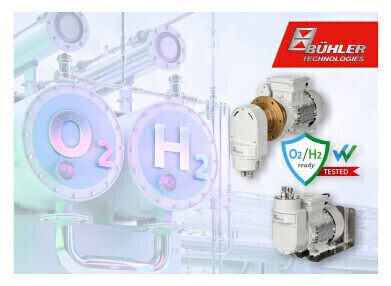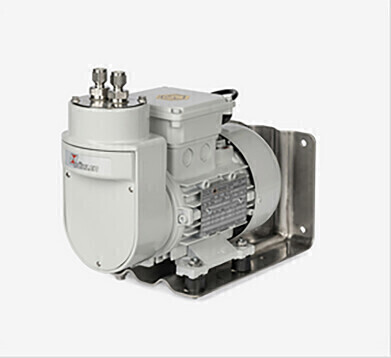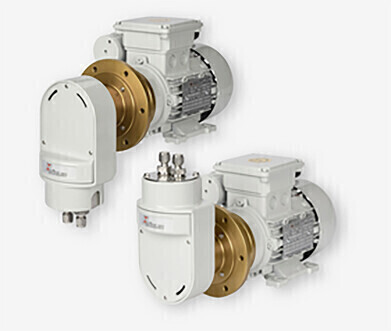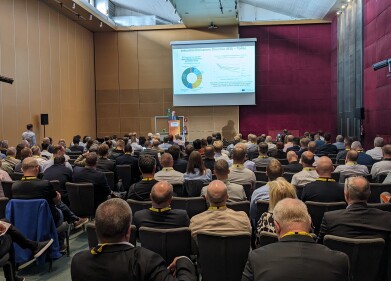Environmental laboratory
Hydrogen components for gas analysis
Sep 12 2023
Hydrogen (H2) is one of the key factors in the current discussion on energy transition. It is the most common element in the universe, but only exists in bound form. In gaseous form, it is around 14 times lighter than air and it burns without leaving residues. H2 has a high energy density and is therefore well suited as a substitute for fossil fuels such as coal or natural gas. Since it is predominantly only present in bound form in nature, it needs to be released from its carriers. This is achieved, as an example, in the case of water (H2O) by electrolysis. If electricity is generated from renewable sources, we speak of 'green' hydrogen - or in the case of methane (CH4), the main component of natural gas - by steam reformation or pyrolysis. Reformation produces CO2 (blue hydrogen) as a by-product and in the case of pyrolysis CO (turquoise hydrogen). Both substances can be further processed as raw materials or stored by carbon capture and storage (CCS).
The H2 produced is extremely volatile because of its very low density, which makes its transportation to users very challenging. In gaseous form, transport by pipeline is conceivable. In liquefied form, hydrogen can be transported to the consumer in insulated tankers or tank trucks; in this case, non-negligible fluctuation rates are inevitable. In addition, H2 has the property of embrittling materials, which must be considered in the service life and design of all plant components. This is especially the case when it comes to the production of 'green' hydrogen when producers need to ensure that not only sufficient 'green' electricity is available, but sufficient, good quality water is available at the production site.
What happens in an electrolyser?
The core of the electrolyser is a cylindrical body (electrolysis module) in which two chambers are separated by a membrane. Each chamber contains an electrode (anode/cathode). The module is usually made by the various manufacturers in a uniform output size. To achieve the desired system output, a certain number of modules are combined into a so-called stack. Two processes are currently in use: AEL electrolysis (alkaline electrolysis) and PEM electrolysis (proton exchange membrane). Both processes have their advantages and disadvantages. The PEM process is particularly compatible with fluctuating energy sources (wind and sun). Simplified, the operation of a PEM electrolyser can be described as follows: Preheated water, of at least drinking water quality, is fed into the two chambers. The operating temperature needs to be between 50-80°C. By applying a voltage, it is split into the constituents H2 and H20. This produces 1 kg of H2 from 9 kg of H2O. On the anode side - the oxygen, and on the cathode side - the hydrogen are each removed via heat exchangers and gas separators. Depending on the task of the overall plant, the oxygen is released into the environment or used elsewhere (e.g. for wastewater treatment).
How do we monitor the process?
As in the case of most energy production methods, the manufacturing processes of H2 must be monitored analytically. The focus here is primarily on compliance with LEL and SIL specifications. In all manufacturing processes, extractive gas analysis is the preferred analytical method for this purpose. Before the sample gas enters the analyser, the residual moisture is removed to protect the measuring cell and avoid falsifying the measured values.
The manufacturing processes of H2 need to be analytically monitored, with the focus of the exercise concentrating mainly on LEL and SIL compliance. Extractive gas analysis is the most ubiquitous analytical method used in these manufacturing processes. Residual moisture must be drawn out to protect and preserve the measuring cell and to avoid false readings before the sample gas reaches the analyser.
Based on our decades of experience in providing and designing analyser systems in gas analysis, we suggest using a pressurised extractive conditioning system for these applications. In principle, this is constructed as follows:
Since no particulate contamination is likely to be found in the sample gas during the electrolysis process, simple sampling points are sufficient, ideally at each outlet of a module. From these, the sample gas is drawn in by a special sample gas pump, which is also capable of conveying any condensate that may occur and fed to a sample gas cooler operating under slight over-pressure. When dimensioning the required flow rates, the lower density of hydrogen on the H2 side must be considered so that it can be throttled to the correct flow rate upstream of the analyser. If there is already sufficient pressure and flow rate in the production process, the pump can be dispensed with. The moisture is separated in the cooler and the dry sample gas is fed into the analyser(s). The over-pressure in the sample gas prevents the ingress of external air and ensures unaltered measurement results. At the same time, the over-pressure forces the condensate out of the system via an automatic condensate drain. Flow and over-pressure are permanently monitored by suitable devices. The piping from the extraction point via the pump head to the automatic condensate drain is made of stainless steel. The same system design is recommended for monitoring oxygen that also accumulates. Due to the high fluctuation of H2, a well-ventilated enclosure is recommended to house the monitoring system. The components used in the system are subject to special procedures in the manufacturing process. Their suitability for the H2/O2 application is partially certified.
This system design reduces the material mix in the treatment system to a minimum, offers the best possible service life and ensures unaltered measurement results.
Digital Edition
AET 28.4 Oct/Nov 2024
November 2024
Gas Detection - Go from lagging to leading: why investment in gas detection makes sense Air Monitoring - Swirl and vortex meters will aid green hydrogen production - Beyond the Stack: Emi...
View all digital editions
Events
Jan 12 2025 Abu Dhabi, UAE
Jan 14 2025 Abu Dhabi, UAE
Jan 20 2025 San Diego, CA, USA
Carrefour des Gestions Locales de L'eau
Jan 22 2025 Rennes, France
Safety, Health & Wellbeing LIVE
Jan 22 2025 Manchester, UK





















